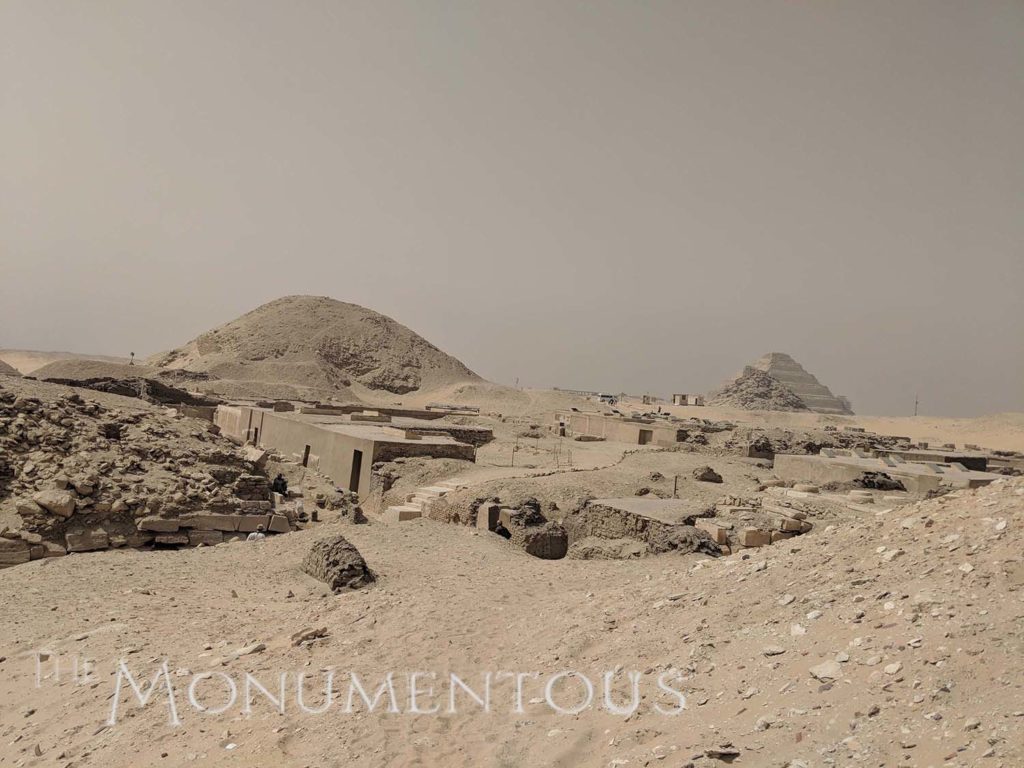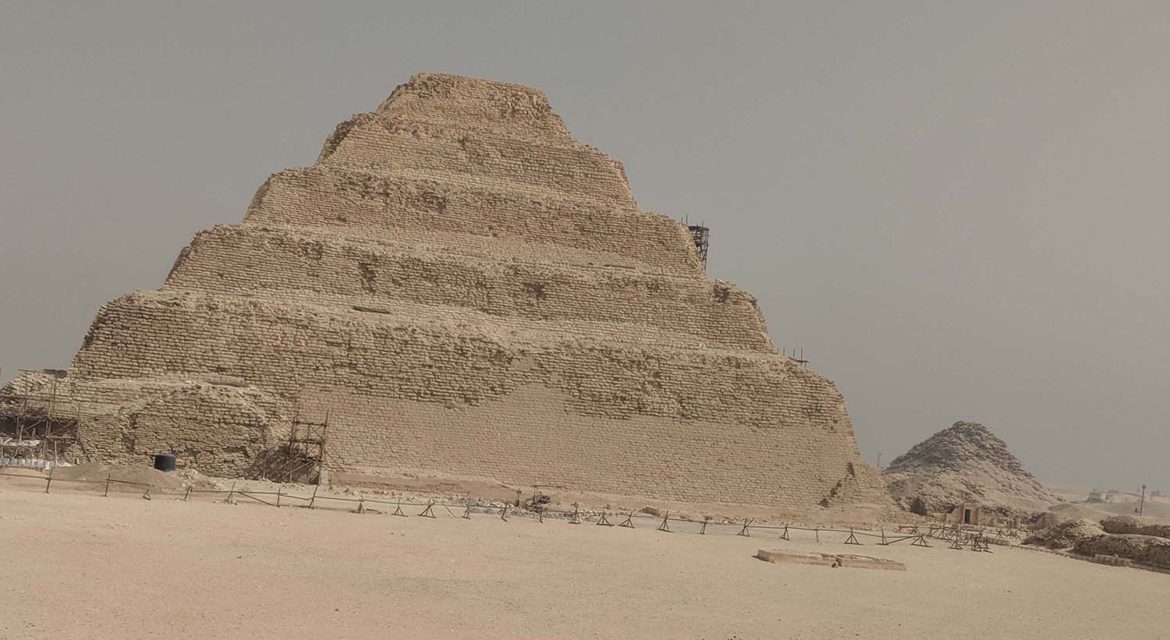 Innovation that ends up permeating an entire society is often difficult to trace back to its origin. There are often different people involved over different time periods to the point that it’s impossible to determine when or how things changed. That’s not the case with the Step Pyramid, which contains the innovation that influenced the whole of Egyptian history, and in turn the entire world.
Innovation that ends up permeating an entire society is often difficult to trace back to its origin. There are often different people involved over different time periods to the point that it’s impossible to determine when or how things changed. That’s not the case with the Step Pyramid, which contains the innovation that influenced the whole of Egyptian history, and in turn the entire world.
Also known as the Pyramid of Djoser, the Step Pyramid is the monument that directly influenced the creation of all of the pyramids in Egypt. By thinking differently and asking a simple “what if?” question, the builders of this incredible structure changed history and proved what kind of power is associated with taking a different approach.

The First Large Stone Building in History
Located at Saqqara, which is a vast ancient burial ground about 20 miles south of Cairo and the Pyramids of Giza, the Step Pyramid was constructed during the reign of Djoser, the first king of the Third Dynasty of Egypt, which began around 2670 BCE. During their lifetime, kings were focused on constructing their tombs to ensure they’d have a successful journey to the afterlife, but Djoser’s top adviser Imhotep decided to ask that “what if?” question when it came to the tomb of his king.

In this time period, mastabas were used to bury kings. They were flat-roofed, rectangular structures with inward sloping sides, constructed out of mud-bricks that were readily available from the Nile River. Inside the mastaba, a deep chamber was dug into the ground and lined with stone and bricks. The burial chambers were cut deep into the bedrock of the area, where the kings would actually be buried.
Imhotep came up with something much more impressive, as he decided that rather than a single mastaba, he would stack several of them on top of one another. The Step Pyramid is essentially six mastabas of decreasing size that have been stacked on top of one another. They cover the chambers of the tomb that were dug beneath the base of the pyramid as a maze of tunnels to protect the body and goods of the king. The Step Pyramid itself was the central focus of a complex that has several structures in the life and the afterlife of the king.
As the first large stone building in history, the Step Pyramid rose 204 feet (62 meters) high and was the tallest structure of its time. It served as a giant stairway for the king to rise to the heavens after resurrection, as its main purpose was to facilitate a successful afterlife for the king so that he could be eternally reborn. In this way, the pyramid shape itself proved to be an incredible innovation in both form and function.
The creation of the Step Pyramid brought about an entirely new way for Egyptians to think about how they could construct their monuments. It proved to be an innovation that was as influential as it was powerful, and that power is something that can still be experienced to this day.

A Marvel in the Desert

The Step Pyramid is a marvel to look upon from up close and from afar. The millennia have taken their toll on the structure, and there are currently efforts to restore and stabilize the Step Pyramid, which had been met with a mix of enthusiasm and criticism. The entrance to the pyramid is located on the north side of the structure, although it is not open to the public.
From up close, you can see what it meant to assemble the six steps of the pyramid, as well as the hints of where and how things changed with the plans as it was being built. Many have speculated that the pyramid underwent numerous changes throughout the building process, and the different sized layers support these theories. Such changes were necessary to enable innovation that had previously never been considered, much less attempted.
The Step Pyramid was only part of a larger mortuary complex that continues to dominate the landscape. The complex consists of the Step Pyramid, the House of the North, the House of the South, the Serdab, the Heb Sed Court, the South Tomb, Temple T, and the Northern Mortuary Temple. These other locations provide visitors and archeologists with a sense of how these structures influenced the people who resided in the region, all of which continue to inspire the culture and society as a whole. The Step Pyramid literally and figuratively anchors all of it to the landscape and region.
The influence it has enabled is something that can be seen in direct and indirect ways to this day, which is especially notable considering the Step Pyramid has been around for almost 5,000 years.

Permeating the Culture and Civilization
Since it is located south of Cairo, and literally in the middle of the desert, the Step Pyramid is not as popular of an attraction as the Giza Pyramids or many of the other ancient Egyptian monuments and collections that are located in the city itself. Nonetheless, merchants make their living at the location by selling items and camel rides, while handfuls of cars and buses make their way into the area on a daily basis.

It’s the little places and ways where you see the influence of the Step Pyramid that can be the most notable though. That can be in anything from the representation of the Step Pyramid on a stamp to a charm to the logo in a business. However, an even more significant influence can be seen in the over hundred pyramids that still exist in the region and date back to ancient Egypt, all of which can trace their origin to the Step Pyramid.
The presence of these pyramids in the landscape and across the culture are a reminder of what it can mean to create something that resonates so deeply with so many different people across so many different time periods. The Step Pyramid has permeated the culture and civilization as a whole, and that’s something that can be seen and felt across the region and even the entire world.
While various other civilizations embraced and utilized the form of the pyramid, the Egyptians literally took it to new heights that no one else has been able to achieve despite the innovations and developments that have taken place over the last few centuries. The structure represents a legacy that few others can rival, and continues to inspire.

New Solutions to Old Problems

The thought of building something as huge and influential as the Step Pyramid is too much for most, with the logistics and expense associated with a project of this size being beyond comprehension. However, it’s not the size or scope of the Step Pyramid that ended up being its’ most enduring legacy, or what makes it such an important icon today. What’s so notable about the Step Pyramid is how it personifies what it means to approach something in a different way, and what can happen when someone asks, “what if?”
Egyptian kings had been buried in mastabas for centuries, and the limitations of these structures frustrated leaders for centuries. The builders of the Step Pyramid came up with a new solution to an old problem, and their willingness to embrace innovation literally changed the world. It’s a lesson in not only terms of what it means to create a legacy, but more importantly, what it can mean when someone thinks differently.

